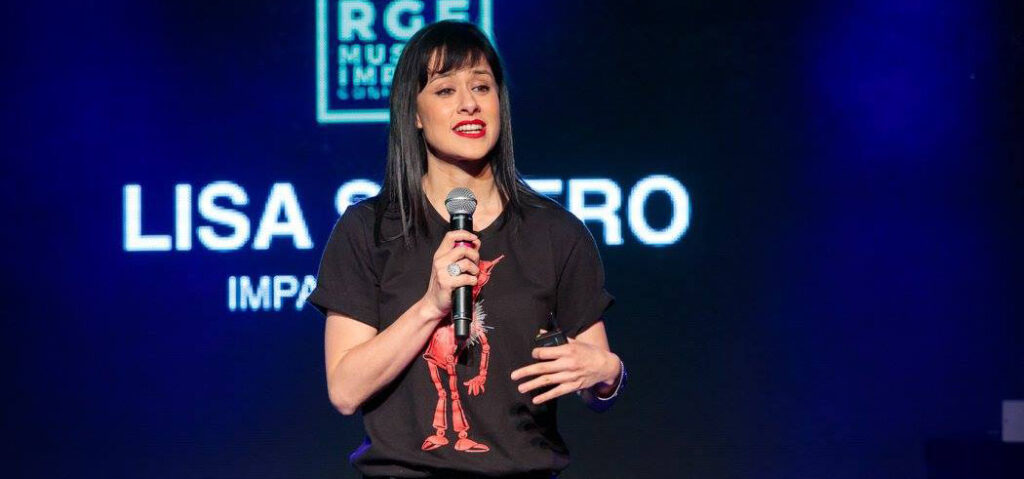Eight Principles for Storytelling in Innovation with Lisa Shufro
In a conversation with Fabric CEO Tom Bassett, Lisa Shufro (Chief Storyteller for What Matters) shares eight of her principles for storytelling, based on her work with John Doerr’s Measure What Matters ongoing movement, and her experience curating conference speakers for innovation forums around the world. She is the former Managing Editor of TEDMED.

#1: Identify the human problem—not the process problem.
Shufro’s title is no accident. “What is significant about the term Chief Storyteller is the emphasis on the importance of the human connection,” she explains. Measure What Matters is more than instructions on how to use Objectives and Key Results, and so are the stories on whatmatters.com “I ask what human problems are leadership solving for, rather than what processes keep them all feeling like they’re checking all the boxes. I think that’s a different lens.”
#2: Most innovation stories follow one of three archetypes:
Discovery
“In the innovation space—where I spend most of my curatorial time—I would say there are usually stories of discovery or ongoing inquiry. For example, the discovery of coffee: Why did it take 250 years for Sweden not to arrest Swedes who drink coffee? Or what’s going on with quantum computing and how we got there? That’s another ongoing inquiry/discovery kind of story.”
Challenge
“Florence Nightingale, or the discovery of germs, or turning the telescope around and making it the microscope….that’s challenging a widely held belief. Being among the first to say, ‘Hey, I don’t think that we catch cholera because people smell bad. There’s probably a thing called germs.’ That is equivalent to ‘Hey, the earth is not the center of the universe.’ We did nasty things to people who said that; that’s a challenging a commonly held belief story.”
Call to action
“The call to action can kind of take one of two forms: ‘Hey, come with me, there’s good fortune this way.’ Or there’s, ‘Hey, everybody, we’re heading in a scary direction. Get it together, folks, we’ve got to go over here.’”
The clearest talks tend to focus on only one of these archetypes.
#3: Determine the scale that creates the most relevance.
“The thing that varies the most in my opinion is something I call scale. What a lot of people miss is: when I’m giving you data, it’s at human scale or it’s at business scale or it’s at societal scale or national scale. And then I need to come up with a story that brings it to a scale that’s relevant to the listener.
“So if it’s a story about Fatoumata, the farmer in Mali who needs access to seed and tractors in order to go from sustenance farming to small agri-food business, that’s an individual level story. But maybe what the organization that I’m working with wants to do is change systems, and create entirely new agrarian markets. So, the story of Fatoumata doesn’t reinforce their desire to change systems.”
#4: Establish shared context with audiences.
“A story works if you either establish or reveal shared context. If the story lands, you were successful in building or revealing relevance.
“So if you tell the wrong audience the wrong joke…let me give you an example of a joke I’ve always liked: ‘How do you eat an elephant? One bite at a time.’ Now, I think this is cute, but I once told it in Africa and their response was, ‘We don’t eat elephants.’ And so the joke failed because it wasn’t relevant to them, there was no shared context.” Stories work the same way. Build or leverage shared context in your stories.
#5: Understand the relationship delta.
“Where we see both OKRs (Objectives and Key Results) fail to achieve their full potential in an organization—or stories fail to achieve their full potential—is that they fail to elucidate a very important relationship between where we are right now and where we’d like to be.”
#6: Diagnose the hardest part first.
“I was trained as a musician, and I learned very quickly that in order to get onstage, you don’t have the luxury of rehearsing from the beginning to the end of the piece. You have to figure out the hardest part of the piece first. And so you often practice the piece out of order. Diagnosing where to go first is something I’ve been practicing my whole life.”
#7: Work out the story rhythm.
“I call the pattern of tensions ‘rhythm.’ Was it bad, but it all turned out okay? Or It was all great, and then it fell apart? I base the rhythm of tensions to determine which specific example we’re going to use. So a speaker who’s speaking to a general audience—versus a bunch of machine learning technologists—may use a different pattern of tensions to convey the same idea.”
#8: OKRs (Objectives and Key Results) are about transformation, not activities.
“The activities are not what makes a good story, and are not what makes a good OKR. The activities are the things that result in internal transformation or external transformation.”





